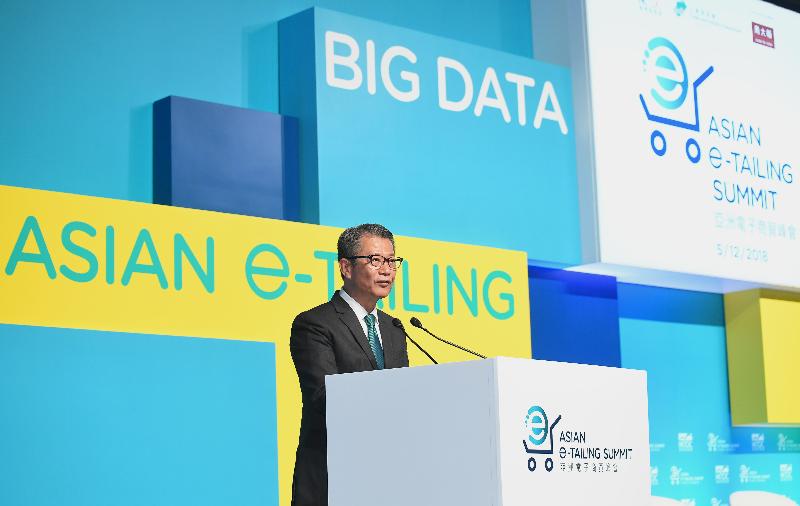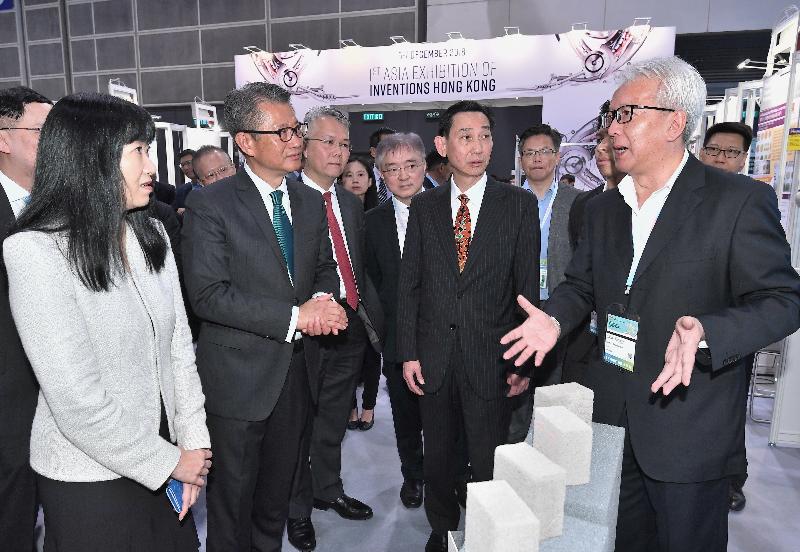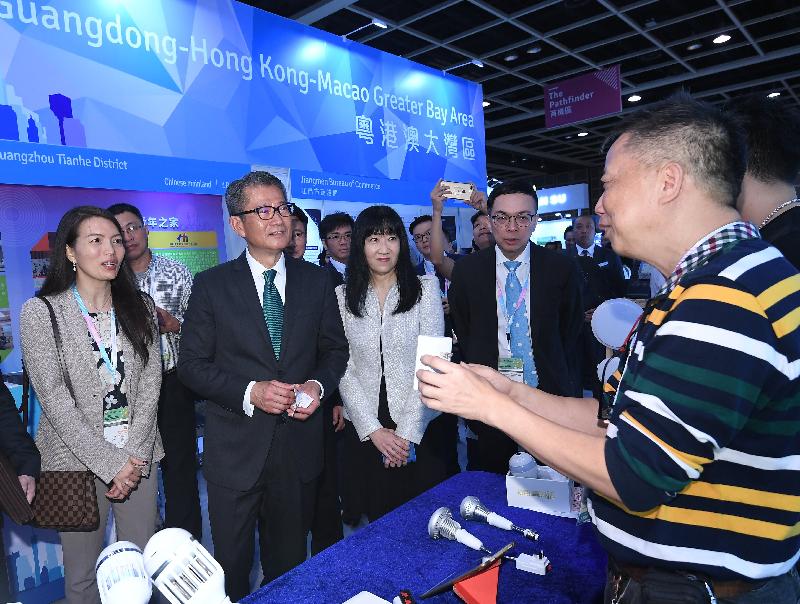LCQ17: Accredited Registers Scheme for Healthcare Professions
Following is a question by the Hon Lam Cheuk-ting and a written reply by the Secretary for Food and Health, Professor Sophia Chan, in the Legislative Council today (December 5):
Question:
The Government launched the Accredited Registers Scheme for Healthcare Professions (AR Scheme) in 2016. The AR Scheme aims to enhance the current society-based registration arrangement of the relevant professions under the principle of professional autonomy and it operates under the principle of "one profession, one professional body, one register". The Accreditation Agent appointed by the Department of Health is responsible for accrediting for each profession one professional body that has met the prescribed standards under the AR Scheme, and the accredited professional body is responsible for administering the relevant register of professionals. In this connection, will the Government inform this Council:
(1) whether it will issue guidelines to those accredited professional bodies to stipulate that when vetting and approving applications for inclusion in the relevant register of professionals, they should not require applicants to submit practice information which contains personal data and medical records of their patients, so as to protect patients' privacy; if so, of the details; if not, the reasons for that;
(2) of the specific measures in place to ensure that in setting the relevant accreditation standards for their professionals, accredited professional bodies uphold the principle of fairness and reasonableness, and do not exclude qualified professionals as far as possible; and
(3) as I have learnt that two professional bodies of clinical psychology with representativeness in the profession (namely, the Division of Clinical Psychology of The Hong Kong Psychological Society Limited and the Hong Kong Association of Doctors in Clinical Psychology) have vastly divergent views on the standards to be adopted for accreditation, whether the Government has formulated measures to continue to take forward the AR Scheme for the clinical psychology profession under the circumstances that such differences cannot be resolved?
Reply:
President,
My reply to the question raised by the Hon Lam Cheuk-ting is as follows:
The Government launched the Pilot Accredited Registers Scheme for Healthcare Professions (the AR Scheme) in late 2016. Under the principle of professional autonomy, the AR Scheme aims to enhance the society-based registration arrangements for healthcare professions which are currently not subject to statutory registration, with a view to assuring the professional competence of healthcare professionals and providing more information for the public to make informed decisions. The Jockey Club School of Public Health and Primary Care of the Chinese University of Hong Kong has been appointed as the independent Accreditation Agent of the AR Scheme.
Having examined all applications received, the accreditation team of the Accreditation Agent considered that five healthcare professions, namely audiologists, clinical psychologists, dietitians, educational psychologists and speech therapists, were preliminarily assessed to meet the criteria for accreditation process under the AR Scheme. Regarding the accreditation applications from the Hong Kong Institute of Speech Therapists and the Hong Kong Institute of Audiologists, the Department of Health accepted the recommendations by the Accreditation Agent and announced the accreditation results for the speech therapist and audiologist professions in April and November 2018 respectively. For the other three healthcare professions, namely dietitians, educational psychologists and clinical psychologists, the Accreditation Agent will commence the accreditation processes in phases according to the readiness of each profession. Upon completion of the accreditation, the Accreditation Agent will review the effectiveness of the AR Scheme and report to the Government with recommended measures for improvement. The Government will continue to forge ahead with the AR Scheme with a view to paving the way for mapping out a statutory registration regime for these professions.
(1) and (2) The Accreditation Agent of the AR Scheme is responsible for assessing whether the applying healthcare professional body has met the standards for accreditation. These standards include governance, operational effectiveness, risk management and quality improvement, standards for registrants, educational and training requirements, as well as management of the register. According to the accreditation standards, the accredited healthcare professional bodies are required to set standards of practice for relevant healthcare professions, which includes a mechanism on confidentiality in handling information of registrants and other relevant information. These healthcare professional bodies have to subscribe and adhere to a set of ethical principles for its governance covering, at the least, confidentiality, independence, objectivity and fairness. They are also required under the accreditation standards to set, promote and publish standards of good practice in respect of professional behaviour based on an ethical framework and technical competence within a defined body of knowledge of the professions of which the register is held. Moreover, the AR Scheme also requires the professional bodies to undertake a self-assessment and external peer review process, through which they, as holders of the voluntary registers of their profession, demonstrate their abilities to meet acceptable standards of quality, and commitment to take action when necessary to protect the public. Professional bodies applying for the AR Scheme should demonstrate a broad representation of their profession, operate in a non-exclusive manner and maintain a well-established operation of professional practice.
(3) Based on the criterion that "healthcare professional bodies holding registers of healthcare professionals should have a broad representation of the corresponding profession and an established operation for a substantive period", the Accreditation Agent of the AR Scheme considered that the Division of Clinical Psychology of the Hong Kong Psychological Society (HKPS-DCP) had initially fulfilled the requirements to proceed with the accreditation process first. The Accreditation Agent notified the two applying bodies concerned in writing in June 2018.
The Accreditation Agent has explicitly requested the HKPS-DCP to thoroughly engage relevant stakeholders including the Hong Kong Association of Doctors in Clinical Psychology, other local clinical psychologists and relevant training institutes in the consideration and formulation of education and training requirements of clinical psychologists in order to demonstrate inclusiveness in admitting professionals from different educational background and training with reasonable standard. By doing so, healthcare services will be provided with due protections to the interest of the public.
We understand that the HKPS-DCP has conducted consultations to collect views from the profession as well as the public on the setting up of a new register for clinical psychologists, including views on resolving the differences on the education and training requirements of clinical psychologists within the profession. The Accreditation Agent has been maintaining ongoing liaison with the above parties in respect of the application to facilitate communication within the profession for reaching a consensus on the registration standards for the profession.
The Government respects the professional autonomy of healthcare professions and wish the clinical psychologist profession to reach a consensus on the relevant standards, with a view to jointly setting up a register for the clinical psychologist profession. Meanwhile, depending on whether the proposal prepared by the HKPS-DCP after consultations has met the accreditation standards, and the views received from the relevant stakeholders, we have requested the Accreditation Agent to tender its recommendations on accreditation result to the Government.



